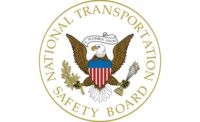The dangers of school bus idling

 Twenty-five million children in the U.S. ride the bus to and from school, spending an average of an hour and a half on a bus each day. Depending on the design of your child’s bus, it could be emitting harmful particles.
Twenty-five million children in the U.S. ride the bus to and from school, spending an average of an hour and a half on a bus each day. Depending on the design of your child’s bus, it could be emitting harmful particles.
Idling is when a vehicle is in park, but the engine is still running. When diesel school buses idle, it poses a health risk to children and school staff. Bus idling increases the concentration of dangerous fine particulate matter (soot) pollution on and around the school buses and pollutes the air inside the school building. This puts students, drivers and school staff at risk for health complications such as asthma attacks, heart attacks and acute bronchitis.
How are children affected?
Children breathe 50 percent more air per pound of body weight than adults, thereby increasing their exposure rate to carcinogens and respiratory irritants contained in diesel exhaust. Because their lungs are still developing, and their essential defense mechanisms have not yet fully developed, they are more susceptible to the harmful effects of pollution. Children exposed to diesel exhaust are at a higher risk for decreased lung function and exacerbation of symptoms for asthma, bronchitis and pneumonia.
What can I do to help?
The State of Illinois enacted a law in 2006 that prohibits parked buses from idling for more than 10 minutes per hour when no passengers are on board, and no more than 15 minutes per hour when passengers are on board. However, the Illinois EPA recommends that school buses idle for no more than five minutes, and many school districts have voluntarily adopted this rule.
Parents should encourage their school districts to implement a no-idling policy, which may also include these regulations:
● Doors of the school bus should be closed before the bus engines are started.
● School buses should be parked or idled away from school play areas, classroom windows or air-intake systems.
● Bus drivers should wait inside the school during extreme cold and hot weather, as opposed to waiting in an idling bus.
You can also support the Illinois Clean School Bus Program (ICSBP). In conjunction with the Illinois EPA, the ICSBP provides funding to assist school districts in reducing emissions from diesel-powered buses. The funds are used to replace existing buses with cleaner models or retrofit buses with advanced emission control technologies. Learn more at http://www.epa.state.il.us/air/cleanbus
Source: Respiratory Health, visit www.lungchicago.org.
Looking for a reprint of this article?
From high-res PDFs to custom plaques, order your copy today!






